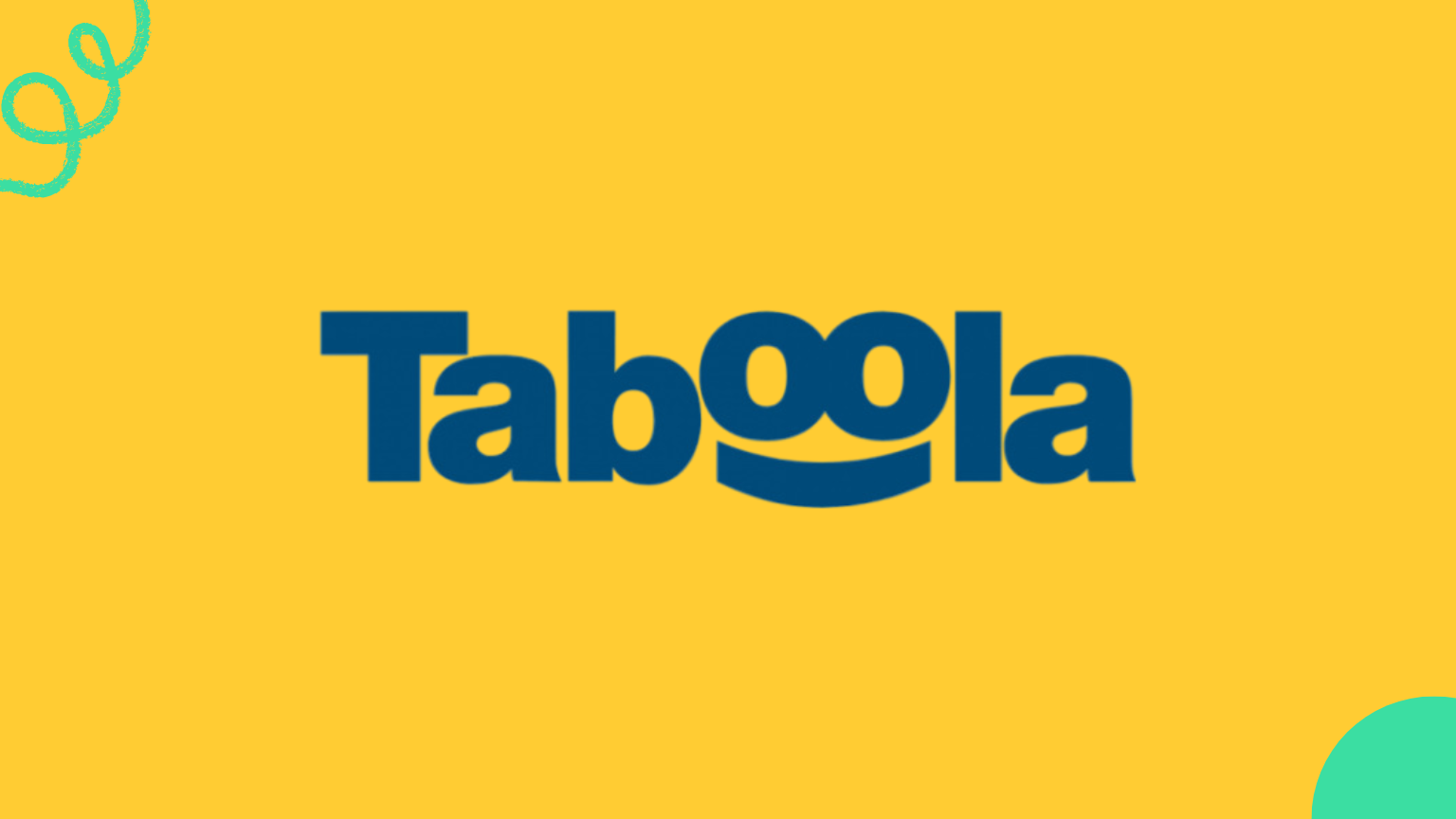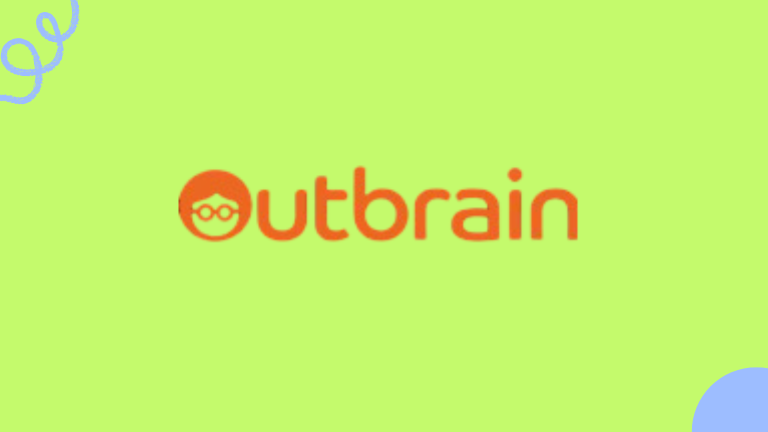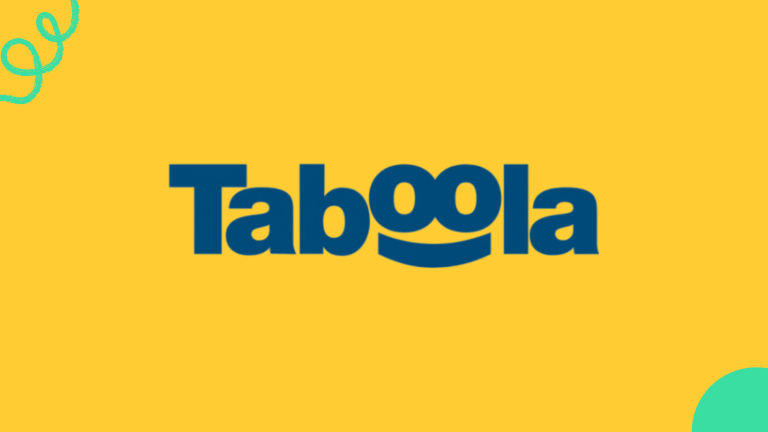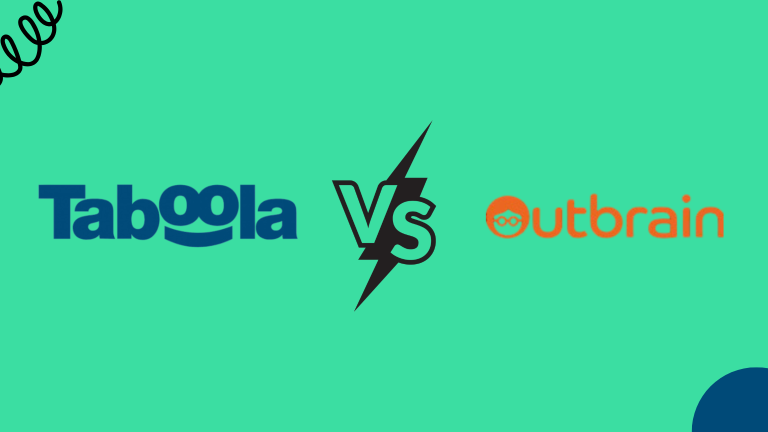Table of Contents
Overview of Taboola
Taboola is a popular native advertising platform that helps businesses promote their content through sponsored links on high-traffic websites. You’ve probably seen these ads labeled as “Recommended for You” or “Around the Web” while browsing online. These aren’t just ads—they’re highly targeted suggestions meant to blend seamlessly into the user’s browsing experience.
Taboola connects advertisers with publishers, displaying promoted content that aligns with the audience’s interests. This makes it ideal for businesses looking to boost visibility and drive action, whether it’s clicks, signups, or purchases.
What is Native Advertising?
Native advertising is a form of digital advertising that aims to seamlessly integrate promotional content into the user experience of a given platform. The primary objective of native advertising is to engage consumers without disrupting their attention or activity, thereby creating a more organic interaction with the content. This advertising strategy aligns itself closely with the format and style of the platform it appears on, making it appear less like a traditional advertisement and more like a part of the site or app’s regular offerings.
Key Characteristics of Native Advertising
Integration with Content: Unlike traditional display ads that often stand out and can be easily ignored or blocked, native ads mimic the surrounding editorial content. This means they share similar design elements, tone, and subject matter with the platform’s organic content.
Non-intrusive Nature: Native ads are designed to be less intrusive than standard formats. They aim to provide value rather than disrupt user engagement. For example, a native ad may be presented as a sponsored article or video that informs or entertains, rather than simply promoting a product or service.
Relevance and Context: Effective native advertisements are contextually relevant to the audience and the platform they are on. This relevance increases the likelihood of interaction as users are more inclined to engage with content that resonates with their interests.
Performance Metrics: Native advertising can be measured using traditional advertising metrics (like impressions and click-through rates) as well as engagement metrics such as time spent with the content, shares on social media, and other forms of interaction.
Example of Native Advertising
Recommendation Widgets: A common sight on news sites, you might find sections that say “Recommended for You” featuring links to articles or videos that align closely with the content you have just read, many of which are sponsored by advertisers.
Role of Taboola in Native Advertising
Personalized Content Recommendations: Taboola’s core functionality revolves around its ability to deliver tailored content based on user behavior and preferences. The algorithm analyzes data such as browsing history, demographic information, and engagement metrics to predict what content a user is likely to find interesting.
Engagement-Driven Approach: Taboola focuses on user engagement as a primary metric. By providing content recommendations that feel relevant to the user’s preferences, it encourages not just clicks but extended time spent on the site, fostering a deeper interaction with the content.
Distribution Across Diverse Platforms: Taboola partners with various publishers, allowing native ads to appear in a multitude of environments. This broad reach enables advertisers to connect with audiences across a wide range of interests and demographic segments.
AI-Powered Prediction Models: The platform utilizes sophisticated algorithms to analyze user behavior patterns, optimizing the content recommendations in real-time. This predictive modeling allows for continuous refinement, ensuring that the right content is served to the right audience at the right time.
ROI and Performance Measurement: Taboola provides advertisers with detailed analytics on how their content is performing, helping them to make informed decisions about future campaigns. This data is crucial in understanding which types of content resonate most with audience segments.
Pros and Cons of Taboola
Pros of Taboola
Broad Reach
Description: Taboola boasts a network of thousands of publishers, reaching a vast global audience. This extensive distribution can significantly increase the visibility of your content.
Benefit: Brands and publishers can tap into diverse demographics, thereby extending their marketing reach beyond their own platforms.
Engagement-Driven
Description: The platform uses an algorithm to recommend content based on user behavior and interests. This personalized approach often leads to higher engagement rates.
Benefit: Advertisers can benefit from increased click-through rates (CTR) and time spent on content, resulting in better brand recall and conversion rates.
Performance-Based Pricing
Description: Taboola operates on a pay-per-click (PPC) basis. Advertisers only pay when a user clicks on the promoted content.
Benefit: This model allows advertisers to control their budgets more effectively while focusing on performance metrics rather than impressions.
Content Marketing Opportunities
Description: Taboola provides a platform for both organic content promotion and paid campaigns, giving brands flexibility in how they reach their audience.
Benefit: Companies can create diverse strategies that combine content marketing with paid promotions to maximize their outreach.
Analytics and Insights
Description: The platform provides comprehensive analytics tools to track performance, including clicks, impressions, and engagement metrics.
Benefit: Advertisers can analyze data to optimize campaigns in real-time, identifying high-performing content and refocusing resources accordingly.
Cons of Taboola
Quality Control Challenges
Description: Some users view Taboola’s network as harboring low-quality or sensational content. The nature of clickbait titles can dilute a brand’s credibility.
Drawback: Associating with lower-quality content may negatively affect a publisher’s or brand’s image, leading to potential trust issues with their audience.
User Experience Impact
Description: Taboola ads can clutter publisher websites, leading to user frustration. Ads may distract users from the core content of the site.
Drawback: A poor user experience can lead to higher bounce rates and lower overall satisfaction with the site, impacting its performance and reputation.
Limited Control Over Placement
Description: Advertisers often have limited control over where and how their content is displayed within Taboola’s network.
Drawback: This lack of control can result in content being shown alongside unrelated or low-quality articles, potentially harming the brand image.
How Much Does Taboola Cost?
| Feature | Estimated Cost |
|---|---|
| General CPC | $0.10–$0.50 per click |
| High-Competition Niches | $1–$3 per click |
| Monthly Budget Minimum | $500+ |
Taboola uses a Cost-Per-Click (CPC) pricing model, meaning advertisers only pay when users click on their ads. However, the pricing varies depending on factors like industry, audience targeting, and ad competition.
General CPC: $0.10–$0.50 per Click
The General Cost-Per-Click (CPC) represents the typical price range for most campaigns. Here’s how it works:
Affordable Entry Point:
At $0.10 to $0.50 per click, Taboola provides a cost-effective way to drive traffic to your website, blog, or product pages. This range is ideal for content marketers and small to medium-sized businesses that want to test their campaigns without significant financial risk.
What Affects CPC Within this Range?
Factors like audience targeting, ad quality, and competition within your niche influence where your CPC will fall. For instance, targeting a broader audience with generic content may result in lower costs, while more precise targeting with high-quality visuals could increase the CPC slightly.
Value for Money:
With native ads blending seamlessly into the content of high-traffic websites, even at this modest cost, you can achieve higher engagement compared to traditional display ads.
High-Competition Niches: $1–$3 per Click
Certain industries face higher CPC rates due to intense competition. These include:
Competitive Industries:
Sectors like finance, insurance, real estate, and technology often see CPCs in the $1 to $3 range. This is because advertisers in these niches are willing to pay more to reach premium audiences.
Premium Audiences:
High-competition niches target users who are more likely to make high-value purchases or take actions such as signing up for services. For instance, a tech company advertising the latest software tool may pay a higher CPC to attract business professionals.
Why the Higher Costs Pay Off:
While $1–$3 per click might seem expensive, these campaigns typically deliver a strong Return on Investment (ROI). For example, a finance company paying $2 per click might convert those leads into customers purchasing high-value services.
Monthly Budget Minimum: $500+
Taboola requires advertisers to meet a minimum monthly budget of $500 to use its platform. Here’s what you need to know about this requirement:
Why a Minimum Budget?
This threshold ensures campaigns have enough funding to generate meaningful data and results. Running a campaign with a lower budget could result in too few impressions or clicks to make informed decisions about optimizing performance.
What You Get for $500:
With a $500 budget, advertisers can expect to reach thousands of users, depending on their CPC. For example:
At a CPC of $0.50, $500 would deliver around 1,000 clicks.
At a CPC of $0.10, the same budget could result in up to 5,000 clicks.
Who Benefits the Most?
This minimum makes Taboola particularly appealing to mid-sized and larger businesses or smaller businesses ready to invest significantly in content marketing. It ensures you’re putting enough resources into your campaign to see real impact.
How to Create Your First Campaign on Taboola
Creating your first campaign on Taboola is an intuitive process that helps advertisers effectively reach their target audience. This step-by-step guide walks you through everything you need to know to get started with native advertising on Taboola.
Choose the Right Content
The foundation of a successful campaign lies in selecting the right content to promote. Consider the type of content—whether it’s informative, educational, or entertaining. Is it a blog post, a video, or a photo gallery? Reflect on why your target audience would find it appealing.
Visual content often generates higher click-through rates (CTR). Data suggests that visuals are more engaging, making them a powerful choice for your campaigns. Start by identifying what will resonate most with your audience and align with your campaign goals.
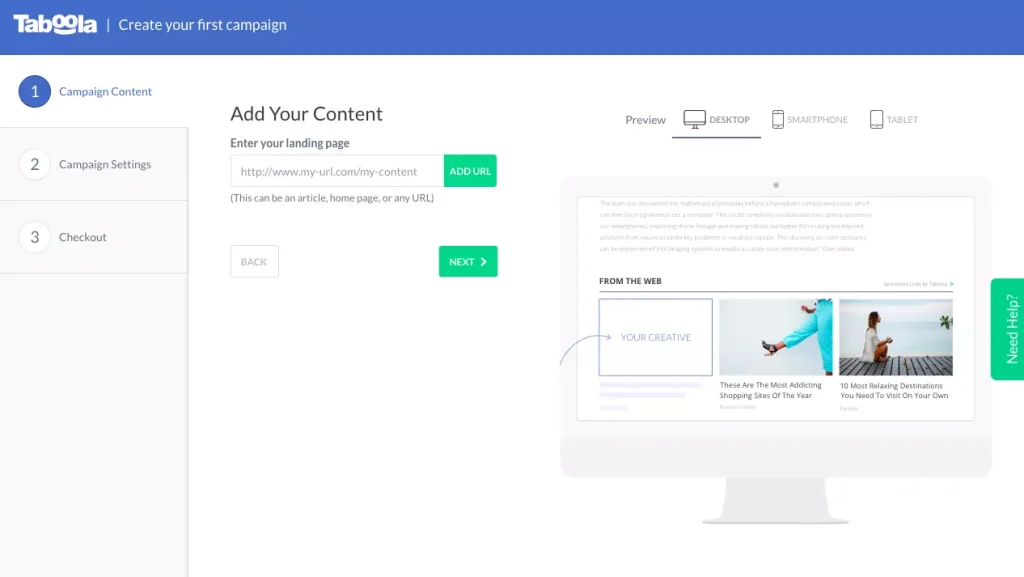
Via Taboola
Create Compelling Ad Content
Taboola’s platform allows you to craft ad content by entering a title, branding text, target URL, and an image. The effectiveness of native ads depends on how engaging they appear to users. Here’s how to get it right:
Title
You have a maximum of 60 characters to grab attention and encourage clicks.
Use power words that evoke emotions or curiosity (e.g., amazing, astonishing, ultimate).
Include numbers or statistics (e.g., “5 Simple Steps to Boost Your Savings”).
Be precise and concise. For instance, “How to Succeed in Business” is generic, while “CEO Shares 3 Proven Business Growth Tips” is more engaging.
Thumbnail
The thumbnail image is often the first thing users notice. High-quality, visually appealing images are crucial. A vibrant, well-designed thumbnail can draw attention and increase clicks. Test multiple images to find what resonates best with your audience.

Via Taboola
Define Your Marketing Objective
Every campaign needs a clear objective. Taboola offers five options to align your efforts with specific goals:
Lead Generation: Collect potential customer information.
Online Purchases: Drive sales through e-commerce platforms.
Brand Awareness: Increase visibility and recognition for your brand.
Web Engagement: Bring users to your website for content interaction.
Mobile App Installs: Promote downloads and engagement for your app.
Choosing the right objective ensures your campaign is optimized for success and gives you the ability to track meaningful KPIs.
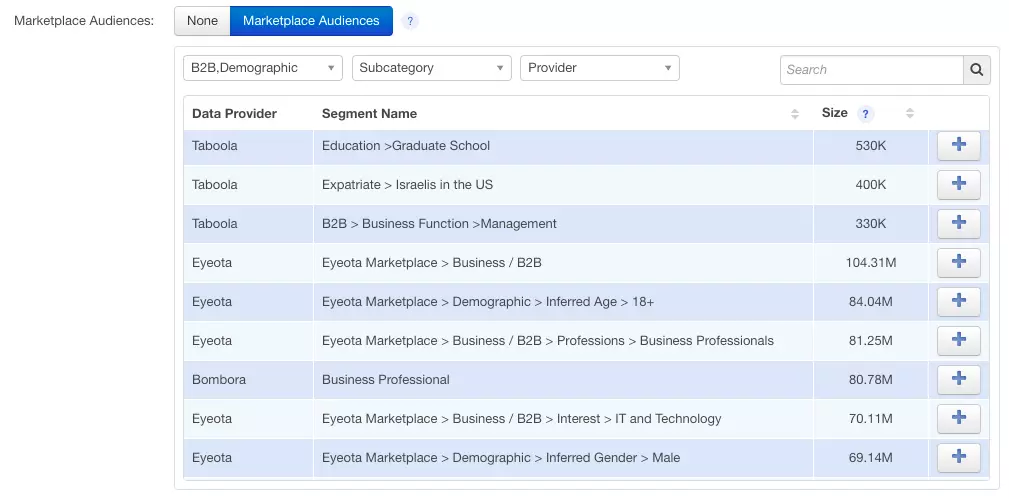
Via Taboola
Target Your Audience
Initially, Taboola provides basic targeting options like country and device type. Once you complete the setup, you unlock advanced targeting tools:
Campaign Clickers: Retarget users who interacted with your ads in previous campaigns.
My Audiences: Retarget website visitors by setting up the Taboola Pixel.
Lookalike Audiences: Reach people similar to your existing customers based on behavior and demographics.
Marketplace Audiences: Target users based on interests, behavior, and buying intent.
Tips for Effective Targeting
Keep testing and analyzing your audience. You may discover unexpected insights.
Segment audiences to fine-tune settings like CPC (cost-per-click) or ad creatives.
Avoid over-narrowing your reach by combining too many targeting criteria.
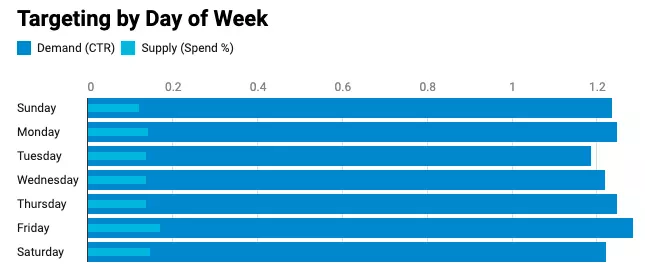
Via Taboola
Set Your Campaign Schedule
Determine when your ads should run. You can specify exact times for your campaign to go live or exclude certain hours or days. For instance, user behavior often varies by day of the week or time of day, as shown in Taboola’s user behavior insights. Scheduling your campaign based on these patterns can significantly enhance performance.
Choose a Bidding Strategy & Budget
Taboola provides two main bidding strategies:
Fixed Bid: A consistent bid amount for all impressions.
Smart Bid: Uses historical data to automatically adjust bids for better conversion rates.
With Smart Bid, the system evaluates each impression’s likelihood of converting and adjusts bids accordingly. Taboola also conducts real-time A/B testing to compare Smart Bid with Fixed Bid, using the more effective option.
Setting the Budget
Define a monthly or total campaign budget.
Choose a pacing strategy:
Balanced Pacing: Spreads your budget evenly throughout the month.
Accelerated Pacing: Spends your budget as quickly as possible.
Strict Pacing: Ensures a minimum daily spend but may result in higher-than-expected daily expenditures.
To avoid depleting your budget too quickly, set a daily cap and monitor spending.
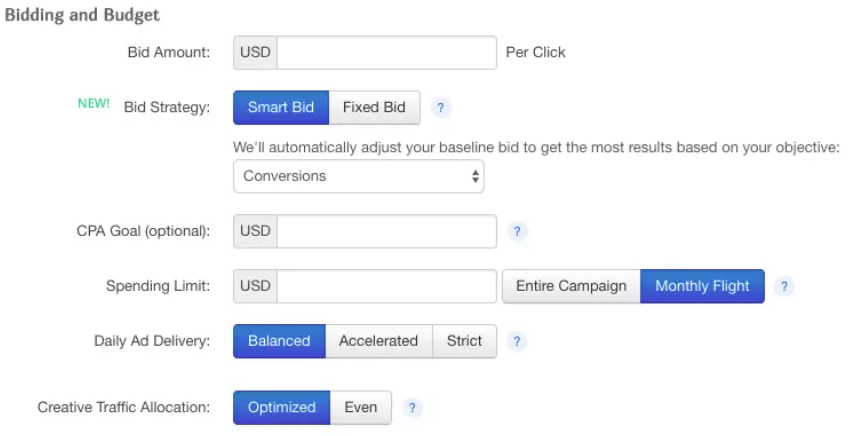
Via Taboola
Monitor and Optimize Performance
Once your campaign is live, Taboola provides robust reporting tools to track its performance. You can filter reports by time, location, platform, or audience. Key metrics include:
Impressions: Total number of ad views.
CTR (Click-Through Rate): Percentage of users who clicked your ad.
Conversions: Number of users who completed the desired action (e.g., purchases, sign-ups).
CPA (Cost Per Acquisition): Cost incurred for each conversion.
CPC (Cost Per Click): Amount paid for each click.
Viewable Impressions: Ads seen for at least one second.
Taboola Pixel allows precise conversion tracking. For deeper insights, integrate with Google Analytics and use UTM parameters to monitor specific campaign links.
Advanced Optimization:
Platforms like Native Pro can help you manage multiple native ad campaigns (e.g., Taboola and Outbrain), track performance, and get actionable insights from a single dashboard.
Conclusion
Taboola is a prominent native advertising platform that empowers businesses to boost their visibility and drive engagement through strategically placed content recommendations across a vast network of publisher sites. By utilizing sophisticated algorithms and machine learning, Taboola ensures that advertisers’ content reaches the most relevant audiences, enhancing the likelihood of generating valuable leads and increasing conversion rates.
With its expansive reach—spanning millions of daily active users worldwide—Taboola provides an unparalleled opportunity for businesses to promote their offerings in a non-intrusive manner, seamlessly blending sponsored content with the user experience and fostering a higher level of engagement. As a result, advertisers can not only enhance brand awareness but also cultivate meaningful interactions that drive sales and foster customer loyalty.
FAQs
u003cstrongu003eWhat is Taboola, and how does it work?u003c/strongu003e
Taboola is a native advertising platform that connects businesses with potential customers by placing sponsored content on high-traffic websites. It works by using AI to match ads with users based on their interests and browsing behavior.
u003cstrongu003eHow much does it cost to advertise on Taboola?u003c/strongu003e
Taboola operates on a CPC model, with costs ranging from $0.10 to $3.00 per click depending on the industry, target audience, and ad competition. The minimum budget requirement is typically $500 per month.
u003cstrongu003eIs Taboola suitable for small businesses?u003c/strongu003e
Yes, but small businesses must consider the budget requirements. With a $500 monthly minimum spend, Taboola can deliver strong ROI if campaigns are well-targeted and optimized.
u003cstrongu003eCan Taboola be used for video advertising?u003c/strongu003e
Absolutely. Taboola supports video ads, which are highly effective for engaging audiences. These ads typically cost $0.30–$1.00 per view and can drive significant brand awareness and conversions.
u003cstrongu003eHow does Taboola compare to Google Ads?u003c/strongu003e
Taboola specializes in native advertising, blending ads seamlessly into website content, while Google Ads offers broader options like search and display ads. Taboola is ideal for storytelling and content promotion, whereas Google Ads excels in direct response campaigns.
u003cstrongu003eWhat kind of content performs best on Taboola?u003c/strongu003e
Content that provides value to the audience, such as blog posts, how-to guides, product reviews, and engaging videos, tends to perform well. Strong headlines and high-quality visuals are essential for success.
u003cstrongu003eWhat industries benefit the most from Taboola?u003c/strongu003e
Industries like e-commerce, technology, travel, and finance often see the best results due to their broad appeal and higher content engagement potential.
u003cstrongu003eHow do I track the success of my Taboola campaigns?u003c/strongu003e
Taboola offers a robust analytics dashboard that tracks metrics such as impressions, clicks, CTR, and conversions. Integrating Taboola with tools like Google Analytics can provide even deeper insights into performance.
u003cstrongu003eAre there any challenges in using Taboola?u003c/strongu003e
Yes, common challenges include high costs for smaller businesses, maintaining ad quality, and ensuring ads don’t appear clickbaity. Regular optimization and careful monitoring can help overcome these issues.
u003cstrongu003eCan Taboola ads target specific audiences?u003c/strongu003e
Yes, Taboola offers advanced targeting options, including demographic filters, geo-targeting, interest-based targeting, and retargeting. These features allow advertisers to refine their audience for better results.

